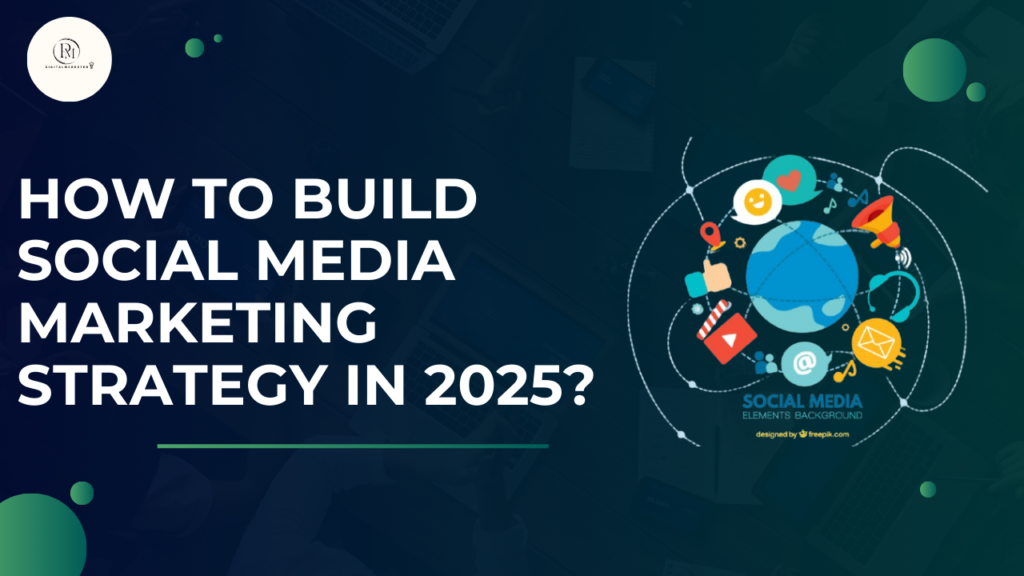Understanding the Importance of Social Media Marketing in 2025
Social media marketing plays a crucial role in any business’s digital strategy in 2025. As more consumers turn to platforms like Instagram, Facebook, and TikTok for information, entertainment, and shopping, businesses must leverage social media marketing to stay competitive. This marketing strategy helps brands reach a vast audience, foster engagement, and build strong relationships with their customers.
In 2025, social media marketing is not just about creating posts but also creating a genuine connection with the target audience. By utilizing effective social media management techniques, businesses can engage users in meaningful ways, address customer inquiries, and receive valuable feedback. Brands that prioritize social media listening and real-time interactions can build trust and enhance customer loyalty.
Another critical aspect of social media marketing is the ability to target specific demographics through paid social media advertising. With tools like Facebook Ads, businesses can create highly targeted campaigns to maximize return on investment (ROI). Therefore, social media marketing is an essential tool for increasing brand awareness, driving website traffic, and ultimately boosting sales.
Choosing the Right Social Media Platforms for Your Brand
Choosing the right social media platforms is fundamental to a successful social media marketing strategy. Different platforms attract different audiences, and selecting the right one ensures your brand connects with its target demographic. In 2025, businesses must strategically decide which platforms align best with their objectives.
For instance, Facebook marketing remains an effective tool for reaching a broad audience, particularly for older demographics. Instagram is ideal for brands targeting younger, visual-driven consumers, while TikTok excels with Gen Z and millennials through short-form video content. LinkedIn is the go-to for B2B brands seeking professional networking opportunities and thought leadership content.
Social media management involves more than just picking a platform—it’s about understanding where your audience spends their time and crafting content that resonates. A strong social media strategy focuses on creating platform-specific content that drives engagement. Businesses should also consider integrating cross-platform strategies to maximize their social media presence.
Social Media Advertising: Paid Strategies in 2025
In 2025, social media advertising is a critical element of a comprehensive social media marketing strategy. With billions of users active on platforms like Facebook, Instagram, and LinkedIn, paid social media campaigns offer businesses the ability to reach targeted audiences effectively. Social media advertising allows for precise demographic targeting, ensuring that ads reach the right people at the right time.
Facebook marketing, for instance, provides robust advertising tools that allow businesses to define audiences based on interests, behaviors, and demographics. Instagram and TikTok also offer creative ad formats, such as stories and short videos, to engage users. Social media advertising in 2025 will likely focus on the increasing use of AI to refine targeting and improve ad relevance.
Paid social media advertising is a fast and efficient way to increase brand awareness, drive traffic, and boost sales. A well-structured paid campaign allows businesses to track performance metrics and adjust strategies in real-time, ensuring optimal ROI. By leveraging the latest advertising tools and trends, businesses can capitalize on social media’s immense potential for growth.
Building an Effective Social Media Content Calendar
An effective social media content calendar is an essential component of successful social media marketing. By planning and scheduling posts in advance, businesses can maintain a consistent online presence, ensuring that content is strategically aligned with marketing goals. In 2025, businesses that rely on social media management tools can optimize their workflow, improving efficiency and saving time.
A social media content calendar should include a variety of content types, such as promotional posts, user-generated content, and interactive posts. Additionally, it’s important to incorporate seasonal trends and events relevant to your industry. This ensures that your content stays fresh and timely, engaging audiences year-round.
By scheduling content, businesses can also monitor performance and adjust the calendar as necessary. Tracking engagement metrics helps optimize content and improve future strategies. Consistency in posting is crucial for maximizing reach and engagement. A well-planned social media strategy, paired with an organized content calendar, drives continuous growth and fosters deeper relationships with followers.
Budgeting for Social Media Marketing in 2025.
Budgeting for social media marketing is essential for businesses in 2025. Effective budgeting ensures that companies allocate the right amount of resources for organic growth and paid advertising. With the growing importance of platforms like Instagram, TikTok, and Facebook, businesses need to prioritize social media marketing to stay competitive in an ever-changing digital landscape .With platforms like Instagram, TikTok, and Facebook, social media is key for staying competitive.
The first step in budgeting for social media marketing is identifying business objectives. Whether the goal is to increase brand awareness, drive sales, or engage customers, each goal requires different budget allocations. Paid social media advertising, such as Facebook marketing, can provide immediate visibility, but it’s important to balance this with a long-term strategy that includes content creation, community management, and organic engagement
Businesses should also consider the costs of social media management tools, content creation (including video production), and influencer partnerships. In 2025, businesses should allocate budgets for social media monitoring and analytics tools to track campaign performance and adjust strategies for maximum ROI. A well-planned budget allows businesses to effectively use social media to build lasting relationships and boost brand visibility.

Social Media Customer Service: Providing Real-Time Support
Social media customer service is becoming increasingly important in 2025, as consumers expect instant support on platforms they use daily. Social media marketing goes beyond content creation and engagement; it’s also about providing real-time customer support through direct messages, comments, and even live chats.
Providing excellent social media customer service helps build trust and loyalty among customers. Quick responses to queries or concerns can significantly enhance a customer’s experience, encouraging positive feedback and repeat business. Social media management tools allow businesses to track mentions and engage with customers promptly, ensuring they are heard.
Incorporating customer service into social media strategies also provides opportunities to address potential issues publicly, demonstrating transparency and a commitment to customer satisfaction. Facebook marketing, for example, offers automated tools like chatbots to provide fast and efficient responses. As consumers continue to turn to social media for support, businesses that invest in real-time assistance will strengthen their brand reputation and customer retention.
Social Media Listening: Understanding Your Audience
Social media listening is a vital strategy in 2025 for businesses aiming to stay connected with their audience. Social media marketing involves not only posting content but also actively listening to what customers and prospects are saying about your brand, products, and industry. By monitoring conversations, businesses can gain valuable insights into consumer behavior and preferences.
Social media management tools, such as Hootsuite and Sprout Social, enable businesses to track brand mentions, keywords, and hashtags. This information can guide content creation, help identify potential issues early, and provide direction for future product or service improvements. Understanding customer sentiment and addressing concerns in real-time helps improve customer relationships and brand perception.
Social media listening also allows businesses to keep an eye on competitors, observe trends, and identify new opportunities. By leveraging these insights, businesses can create more personalized content, refine their social media strategy, and ultimately boost engagement. In 2025, businesses that effectively incorporate social media listening into their marketing strategies will have a significant competitive advantage. Social media listening is key to understanding your audience, and using professional digital marketing services can help analyze insights to refine your strategy.
Conclusion:
In 2025, social media marketing is more essential than ever for businesses looking to succeed in the digital world. From creating meaningful connections with your audience to utilizing paid advertising and real-time customer service, social media offers countless opportunities for brand growth. A strategic approach that includes choosing the right platforms, building an engaging content calendar, and budgeting wisely will ensure businesses stay ahead of the competition. Furthermore, social media listening and effective customer service help foster trust and strengthen customer loyalty. By integrating these strategies, businesses can maximize their social media presence, drive results, and build lasting relationships with their audience in the ever-evolving digital landscape. Master the art of building a successful social media marketing strategy in 2025 by enrolling in a comprehensive digital marketing course.
F.A.Q.
Choose platforms based on target demographics. Facebook suits older users, Instagram is ideal for younger audiences, and LinkedIn is best for B2B marketing.
It helps businesses stay consistent, align posts with marketing goals, and track performance to improve engagement and optimize future strategies.
Increased use of AI for targeted ads, rise of short-form video content, more focus on social media listening, and deeper integration of e-commerce features across platforms.
Use interactive posts, polls, and real-time responses. Create content that resonates with your audience’s interests and needs, fostering conversations and active participation.
Focus on providing value, being authentic, and using a mix of media like videos, polls, and stories. Understand your audience’s interests and create content that sparks conversations
Hashtags increase content discoverability, making it easier for users to find relevant posts. Use trending or niche hashtags to expand your reach and target specific audiences.


